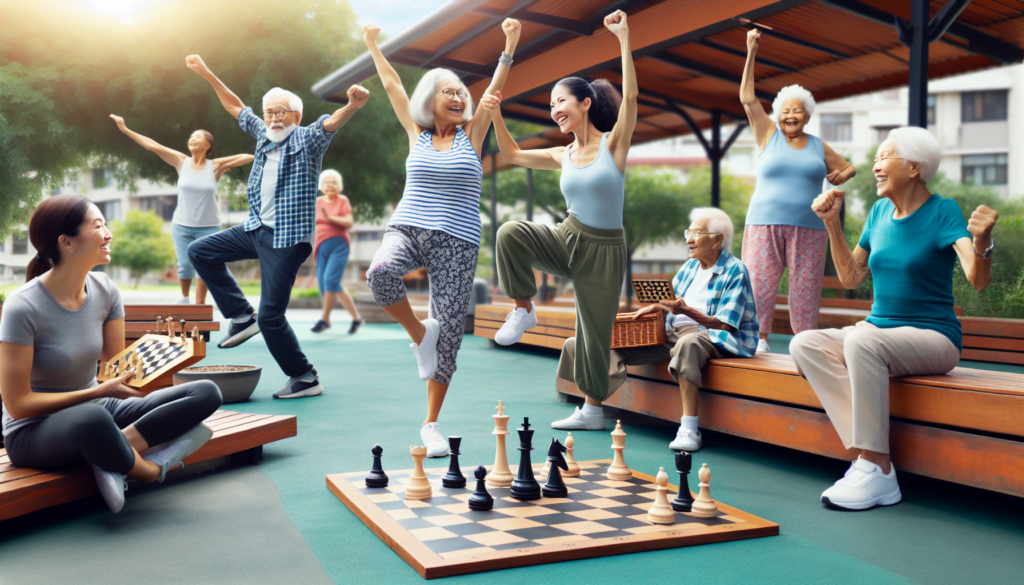As the sun sets on our younger years, staying physically active becomes not just a choice, but a necessity to keep the twilight years shining bright. It’s a well-known secret that as we age, our bodies begin to whisper (and sometimes shout) the need for extra care. But why exactly should you keep moving and grooving as you collect more candles on your birthday cake? Well, the reasons are plenty, and they touch every aspect of your well-being.
Key Takeaways
- Physical activity helps prevent age-related health issues like heart disease and diabetes.
- Regular exercise enhances strength, stamina, and independence in older adults.
- Cardiovascular health benefits significantly from moderate-intensity aerobic activity.
- Muscle-strengthening activities are crucial for preserving muscle mass and strength as we age.
- Balance exercises reduce the risk of falls, a common concern for aging individuals.
- A varied exercise routine offers comprehensive health benefits, including mental health and mood enhancement.
- Physical activity plays a role in weight management and control of chronic conditions.
- Improved sleep quality and cognitive function are additional perks of staying active.
The Importance of Physical Activity for Aging Adults
Prevention of Age-Related Health Problems
Heart disease
As the heart ages, it can become more susceptible to disease. Physical activity keeps the heart muscle strong and the arteries flexible, reducing the risk of heart complications.
Diabetes
Regular exercise helps regulate blood sugar levels, which is crucial in preventing or managing diabetes, a condition that becomes more common with age.
Falls
Staying active improves balance and coordination, which can help prevent falls—a major risk for seniors that can lead to serious injuries.
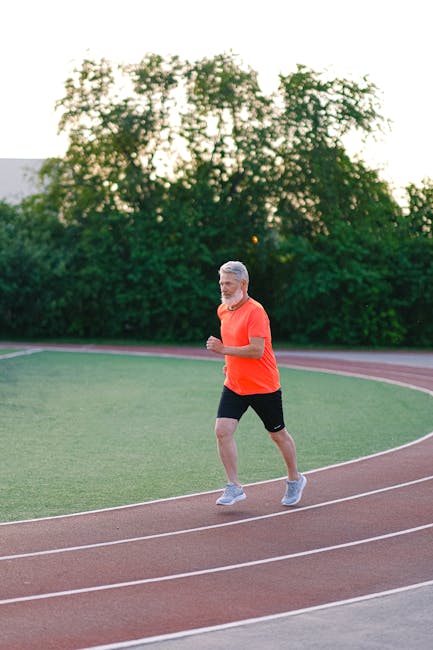
Benefits to Strength and Stamina
Maintenance of Independence
One of the greatest fears as we age is the loss of independence. Regular physical activity ensures that you can continue to perform daily tasks and enjoy your favorite activities without relying on others.
Improvement in Daily Functioning
From carrying groceries to playing with grandchildren, physical activity helps maintain the muscle function necessary for everyday life.
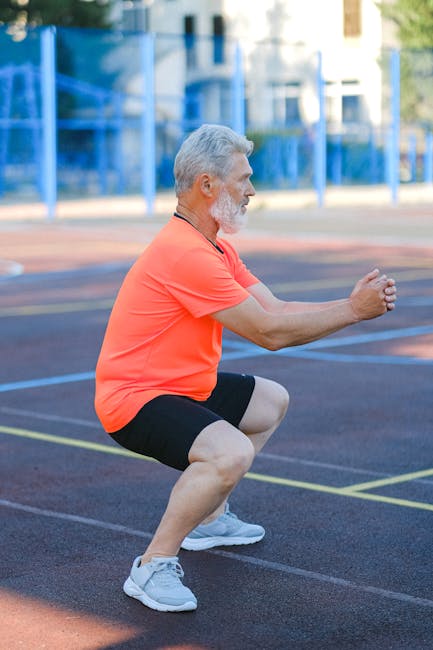
Cardiovascular Health
Role of Moderate-Intensity Aerobic Activity
Maintenance of Heart Health
Activities like brisk walking or swimming keep the heart rate up and improve overall cardiovascular health, which is vital for longevity and quality of life.
Improvement in Circulation
Good circulation is essential for delivering nutrients and oxygen throughout the body. Aerobic exercise helps maintain this crucial bodily function.
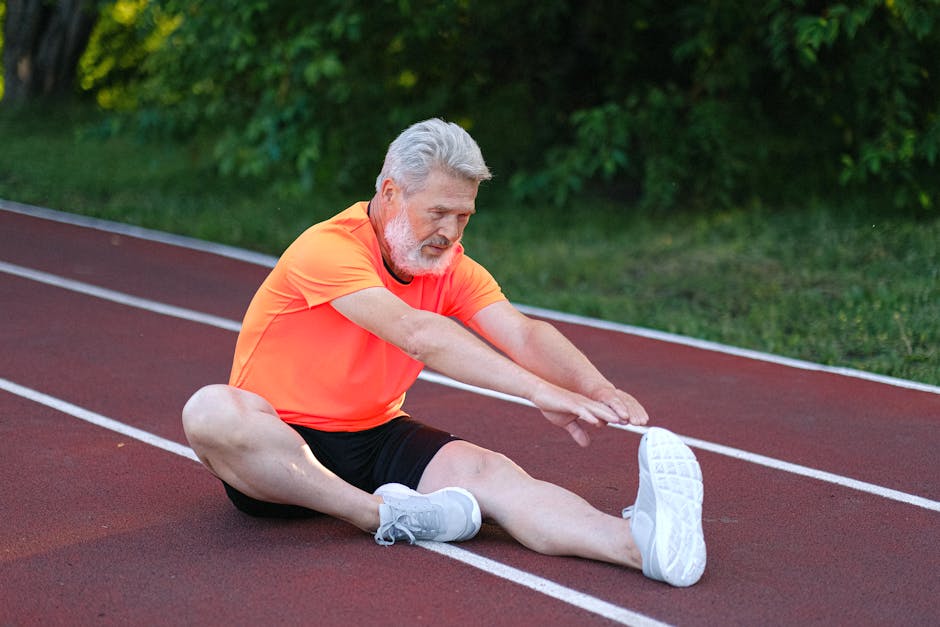
Muscle Strength and Mass Preservation
Importance of Muscle-Strengthening Activities
Counteracting Muscle Mass Decline
After the age of 30, we begin to lose muscle mass. Strength training can slow down this process, keeping muscles robust and functional.
Enhancing Strength with Age
Not only can you maintain muscle mass, but with regular exercise, you can actually increase strength, even as you age.

Fall Risk Reduction through Balance Exercises
Commonality and Impact of Falls in Older Adults
Falls are not a minor issue; they’re a leading cause of injury among older adults. Balance exercises can significantly reduce this risk.
Types of Balance Exercises
Simple activities like standing on one foot or tai chi can make a big difference in improving balance and preventing falls.
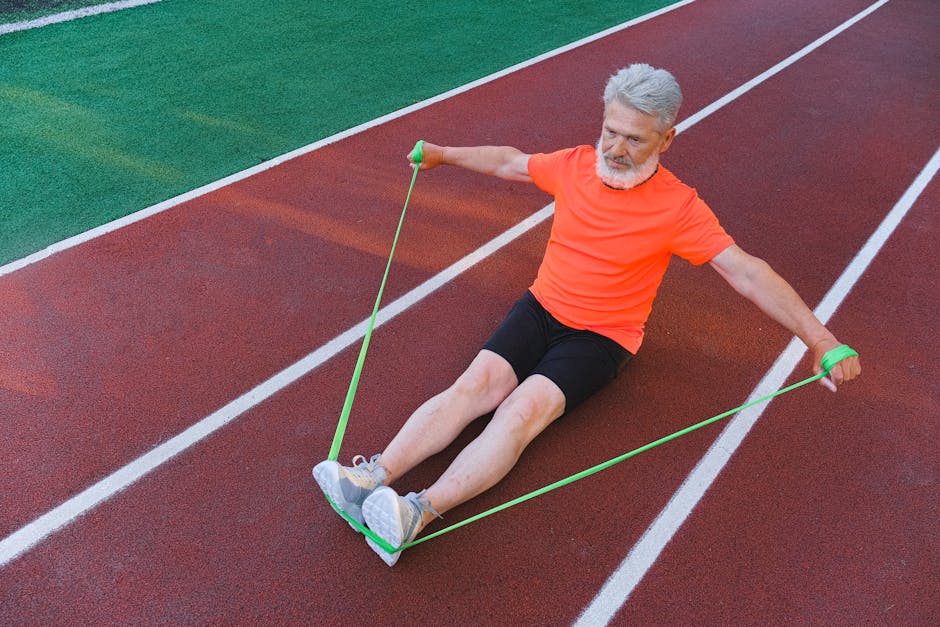
Comprehensive Health Benefits of a Varied Exercise Routine
Combining Different Types of Physical Activities
Aerobic Exercises
Incorporating activities like walking, cycling, or dancing can boost heart health and endurance.
Muscle-Strengthening Workouts
Lifting weights or using resistance bands can help maintain and build muscle strength.
Balance Training
Practices like yoga or balance-focused workouts can help prevent falls and improve overall stability.
Mental Health and Mood Enhancement
Physical Activity as a Mood Booster
Exercise releases endorphins, the body’s natural mood lifters, which can combat feelings of depression and anxiety that sometimes accompany aging.
Impact on Overall Quality of Life
Regular physical activity can lead to a more active social life, better sleep, and a general sense of well-being, all contributing to a higher quality of life.

Weight Management and Chronic Condition Control
Healthy Weight Maintenance
Staying active helps regulate body weight, which can become more challenging as metabolism slows with age.
Obesity Prevention
Regular exercise is a key factor in preventing obesity, a condition that can lead to numerous other health issues.
Management of Chronic Health Conditions
Physical activity can help manage conditions like arthritis, high blood pressure, and heart disease, making it a cornerstone of healthy aging.
Sleep Quality Improvement
Addressing Age-Related Sleep Issues
As we get older, sleep patterns can change, leading to issues like insomnia. Exercise can help regulate sleep and improve its quality.
Exercise as a Tool for Better Sleep
By promoting physical tiredness and reducing stress, exercise can pave the way for a more restful night’s sleep.
Cognitive Function and Dementia Risk
Exercise and Cognitive Health
Staying active has been linked to better cognitive function, keeping the mind sharp as we age.
Physical Activity’s Role in Dementia Prevention
Regular physical activity may lower the risk of cognitive decline and diseases like Alzheimer’s, making it a vital part of maintaining mental health.
Staying physically active as we age is a powerful way to enhance overall health and well-being. It’s about more than just adding years to your life; it’s about adding life to your years. So, lace up those sneakers, dive into the pool, or simply take a brisk walk around the block. Your future self will thank you for it. And remember, it’s never too late to start. For more insights on how to incorporate exercise into a busy schedule, check out these practical tips on /what-are-some-ways-to-incorporate-exercise-into-a-busy-schedule/.
For a deeper dive into the impact of regular physical activity on your mood and mental health, explore how exercise can be a natural mood enhancer at /how-does-regular-physical-activity-boost-our-mood/.
And if you’re curious about how staying active can strengthen your bones and prevent osteoporosis, don’t miss the information on /the-impact-of-regular-physical-activity-on-bone-strength-and-density/.
Remember, every step counts towards a healthier, happier you.
httpv://www.youtube.com/watch?v=1NJmq–OFLY
Staying Spry and Spirited: The Essential FAQ on Physical Activity for the Golden Years
Why is physical activity important for older adults?
Physical activity is crucial for older adults as it helps maintain muscle strength, flexibility, and balance, which are key for mobility and reducing the risk of falls. Regular exercise can also prevent or manage various chronic conditions such as heart disease, diabetes, and osteoporosis. Moreover, it contributes to mental health by reducing the risk of depression and cognitive decline.
How does exercise benefit mental health in older adults?
Exercise has been shown to have a positive impact on mental health in older adults by reducing symptoms of anxiety and depression, improving mood, and enhancing overall feelings of well-being. Physical activity can also improve cognitive function, potentially delaying the onset of dementia and improving memory and attention.
What types of physical activities are recommended for seniors?
Seniors are encouraged to engage in a variety of physical activities that include aerobic exercises like walking, swimming, or cycling, muscle-strengthening activities such as light weightlifting or resistance training, and flexibility exercises like yoga or tai chi. Balance exercises are also important to help prevent falls. It’s best to choose activities that are enjoyable and sustainable long-term.
How much exercise should an older adult aim for each week?
The general recommendation for older adults is at least 150 minutes of moderate-intensity aerobic activity per week, combined with muscle-strengthening activities on two or more days a week. However, any amount of physical activity is better than none, and it’s important to start slowly and gradually increase intensity and duration over time.
Are there any precautions that older adults should take when exercising?
Older adults should consult with a healthcare provider before starting a new exercise program, especially if they have pre-existing health conditions. It’s important to start slowly and choose low-impact activities to avoid injury. Staying hydrated, warming up before exercising, and cooling down afterwards are also important precautions to take.
Can exercise reduce the risk of falls in older adults?
Yes, exercise can significantly reduce the risk of falls by improving balance, strength, and coordination. Balance exercises, in particular, such as standing on one foot or walking heel to toe, are effective in fall prevention. Tai chi is another activity known for its benefits in improving balance and reducing fall risk.
What if an older adult has limited mobility? Can they still exercise?
Absolutely. Older adults with limited mobility can still engage in physical activity through seated exercises or water aerobics, which are less stressful on the joints. It’s important to focus on what they can do and to adapt exercises to their abilities. A physical therapist can help design a suitable exercise program that accommodates any limitations.
Is it too late to start exercising if you haven’t been active before?
It’s never too late to start exercising. Older adults who have been inactive can still benefit from starting a physical activity routine. The key is to begin with gentle activities and gradually increase the intensity and duration as fitness improves. Even simple activities like walking or chair exercises can make a significant difference in health and well-being.
How can older adults stay motivated to continue exercising?
Staying motivated can be challenging, but setting realistic goals, tracking progress, and finding enjoyable activities can help. Joining group exercise classes or finding an exercise buddy can also provide social support and accountability. Celebrating small victories and focusing on how exercise makes them feel can also boost motivation.
What role does nutrition play in physical activity for older adults?
Good nutrition is essential for fueling the body and repairing muscles after exercising. Older adults should aim for a balanced diet rich in fruits, vegetables, lean proteins, and whole grains. Staying hydrated is particularly important, as older adults may have a diminished sense of thirst. A well-balanced diet complements the benefits of physical activity and contributes to overall health and vitality.
